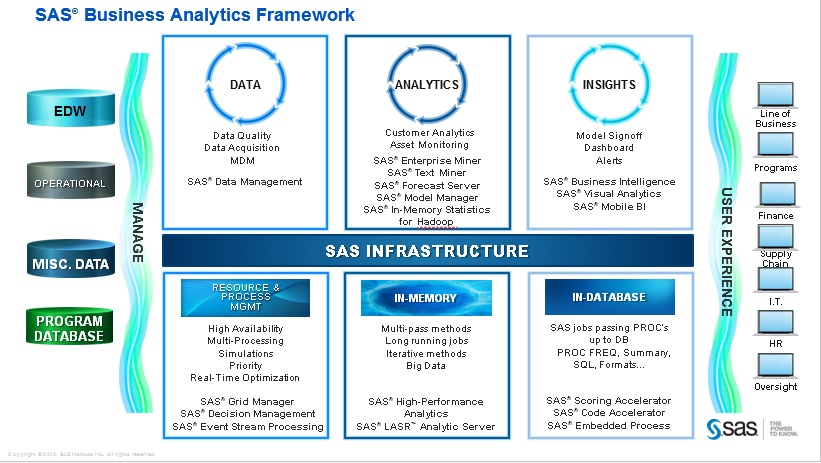I was recently part of team discussing enterprise architecture with a chief IT architect, and we were explaining how SAS can integrate into their existing infrastructure, add business value on top it and even fit into their future planned infrastructure. This conversation was one of the reasons I blogged about how analytics is the ultimate renewable resource.
Why is the architecture important? Without a system that has been engineered and designed to scale, the breadth and depth of your analytics doesn't matter. After all, if you can't deliver the information to decision makers in a timely manner, it doesn't matter how advanced your analytics are or how well you can solve business problems.
To illustrate, here's a diagram that that shows a subset of the powerful data management, analytics, and reporting options you should look for if you're developing an architecture for turning data into valuable information and delivering it in a timely manner.
Maybe you need analytics on a PC, a Server (SMP or MPP), or a group of servers (SAS Grid). Maybe you need the ability to move important data or analytic processing workloads to where the data "lives" using in-database or Hadoop accelerators. Maybe you need an overall faster processing environment via an in-memory analytics engine. Or maybe you need to move data and analytics processing out onto the edge via an event stream processing engine.
With a smart architecture for analytics that scales to your needs, you can do any or all of the above, and you'll be able to deliver The Power to Know® throughout your organization.

